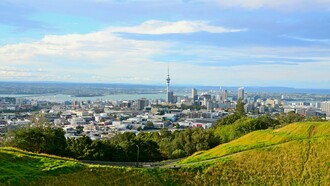Alongside a konbini (convenience store) or a kaitenzushi (cheap sushi) restaurant, no Japanese shopping area is complete without a five-foot statue of Colonel Sanders. Japan is the third-largest market for Kentucky Fried Chicken after China and the United States, with one-thousand one-hundred and fifty-four franchise stores compared with three-hundred and seventy-one Pizza Huts and only four Taco Bells. [1] In Japanese television adverts, characters from popular animes Dragon Ball and OnePiece enthuse about “ケンタッキ” (“Kentucky”) and the idiosyncratic pop-star Kyrary Pamyu Pamyu winks at a blushing Colonel. Images of the Colonel are painted on Ema (wooden plaques on which Shinto worshippers write their prayers and wishes).
Baseball fans even accord the Colonel supernatural powers. According to Japanese sports mythology, the Hanshin Tigers’ long-running losing streak was caused by “The Curse of the Colonel”, after fans of the Osaka team celebrated what was to be the team’s final league victory in 1985 by uprooting a statue of Sanders and throwing it in the Dotonbori river. [2]
The Colonel also makes an unusual appearance in Haruki Murakami’s Kakfa on the Shore (2005). A version of Sanders roams the back-alleys of the red-light-district in Takamatsu, a city on the Japanese island of Shikoku, eventually embroiling the protagonist Hoshino in several episodes of surreal mischief, including a visit to a prostitute who quotes the French philosopher Henri Bergson and the theft of a large white stone from a local Shintō shrine. How do we account for the bizarre ubiquity of this white-haired Southern gentleman in twenty-first-century Japan?
The Colonel’s renown in a country that places a high premium on omotenashii (selfless hospitality) and company loyalty is especially surprising since the real Harland David Sanders was a cantankerous rebel. Before entering the restaurant business, Sanders had lost jobs as both a fireman on the Illinois Central Railroad [3] and as a lawyer in Little Rock, Arkansas, due to brawling, the latter with his own client. [4] In the 1930s, while running a Shell Oil service station in North Corbin, Kentucky, he had a row with the owner of a competing station named Matt Stewart, which ended in a gunfight in which Sanders shot Stewart in the shoulder and Stewart killed another Shell manager. After Stewart was jailed for murder, Sanders gained complete control over the local gas station market, eventually starting also to serve chicken, country ham and steak to travelers, before converting the station into a chicken restaurant. [5] The real Sanders’ pugnacity and wayward employment history appears far from the welcoming reliability projected by the Colonel Sanders’ brand. Yet his early career also demonstrates an impressive capacity for self-transformation.
Of course, Sanders’ greatest metamorphosis was, of course, his creation of the Colonel Sanders brand; a process that appears to be the result of a combination of his determined individualism and a more circumspect recognition of his own limitations. In spite of KFC’s energetic promotion of the Colonel’s “Secret Recipe” of eleven herbs and spices, Sanders’ main culinary innovation appears to be his decision in July 1940 to use a pressure cooker rather than pan-fry, resulting in crispier chicken that could be cooked quickly. [6] His second brilliant move was his decision in the early 1950s to turn “Kentucky Fried Chicken” into a franchise—a business model that was relatively unusual at the time. This enabled KFC to expand rapidly and, by the mid-1960s, branches had opened across America and Canada, and even in Jamaica, Mexico and the U.K. Sanders’ third and final masterstroke was his 1964 sale of the KFC corporation to a partnership of Kentucky businessmen. Although Sanders received the relatively diminutive sum of two million dollars (around 15.7 million in 2017) he was maintained as a brand ambassador, and the corporation grew even more. [7] In spite of his newfound wealth and role, Sanders continued to make surprise visits to KFC outlets to denounce any disappointing food as “God-damned slop”; [8] and he and his wife were eventually sued by the company after opening a restaurant “Claudia Saunders, The Colonel’s Lady” that served KFC-style chicken. [9] Clearly, Sanders’ success had reduced neither his irascibility nor his individualism.
The Colonel’s conquest of Japan began in 1970 when the KFC corporation awarded the Japanese franchise rights to the Mistubishi Corporation. Initially, stores in Nagoya and Osaka proved unsuccessful, until the corporation decided to popularize the outlets by first targeting areas with large expatriate populations. [10] The Japanese branches’ first major innovation was to promote fried Chicken as a Christmas meal, with the tagline “クリスマスはケンタッキー” (“Christmas is Kentucky”). Nowadays, the Kentucky Christmas dinner packages—which range from a 3,780 yen ($32) box of chicken to a deluxe 5,800 yen ($52) whole-roasted chicken and sides—account for around a third of the company’s sales. As Joonas Rokka, associate professor of marketing at Emlyon Business School in France, has observed, this strategy filled a void: “[t]here was no tradition of Christmas in Japan, and so KFC came in and said, this is what you should do on Christmas.” [11] Even now, many Japanese people are shocked to learn that KFCs often are closed on Christmas Day in North America and Europe.
The second important Japanese departure was the installation of a Colonel statue outside every store. Initially this was intended to distinguish KFC from other American fried chicken outlets. Roy Western, KFC Japan’s avuncular waist-coated American chairman, recalls that he devised this arrangement after coming across a “dusty statue of Colonel Sanders” in “a warehouse back in Louisville”, explaining:
I had no idea what it was for and no one else seemed to either. But I bought it and brought it to Japan, and my idea was...you could put one of these outside every Chicken store and it would prove that it was an authentic Kentucky Fried Chicken. [12]
In a dense, crowded city-scape of neon signs and tall, narrow buildings, these statues mark out KFC outlets. They also act to welcome the customer, in the same manner as the shouts of “Irrashiamase!” (“Welcome!”) that greet customers whenever they enter a Japanese shop or restaurant. During seasonal events, staff dress these statues up as Santa Claus, Spiderman, a samurai, a shogunate police officer, an anime character, a baseball player, even a maid. Such acts of embellishment indicate that the Colonel is welcome in Japan partly due to his good-humored compliance with Japanese ideas about how he should act and who he should be in the country.
In this way, the contrary and crotchety Sanders has been embraced and immortalized by a nation that purportedly prizes conformity and congeniality. The Colonel’s persona of a kindly patriarch echoed a positive view of America’s international role as Japan’s economic and military protector. At the same time, the Colonel’s personification of hard work and self-sacrificing generosity chimed with Japanese mores. Kentucky Christmas offered a curious Japanese population an entry-point into the Western festivity: after all, chicken is quite similar to turkey, and Colonel Sanders could almost be mistaken for Santa Claus. Sanders has become a genial symbol of plenty: a modern, Westernized version of the Shintō god Ebisu, whose statue stands outside Ebisu station, Tokyo. The Colonel became big in Japan because he embodied a version of Western identity that matched Japanese expectations and values.
Notes:
[1] Information from: Anonymous, “A World with more Yum: Company”, accessed May 17 2017.
[2] Justin McCurry, “Japanese baseball fans hope to have lifted 'curse of Colonel Sanders'” Guardian, Wednesday March 11 2009.
[3] See Harland Sanders, The Incredible Colonel (Illinois: Creation House, 1974) p. 30.
[4] See Josh Ozersky, Colonel Sanders and the America Dream (Texas: University of Texas, 2012) p. 12.
[5] Kate Taylor, “Seven Things You Didn’t Know About the Real Colonel Sanders”, Entrepreneur, September 4 2015, accessed May 18 2017.
[6] KFC-Sanders Café/Museum, “Harland Sanders Café and Museum: The World’s First Kentucky Fried Chicken,” Corbin, Kentucky Office of Economic Development (2004), archive.is webcapture, 13 August 2013, accessed May 18 2017.
[7] Anonymous, “KFC Corporation History”, International Directory of Company Histories, (London; St. James Press, 1998) Vol. 21.
[8] Jere Downs, “KFC Col. Sanders' revival 'tarnishes' the icon,” Courier-Journal, May 25 2015, accessed May 18 2017.
[9] Ed Ryan, “Colonel Sanders and His Lady: He Cooks, She Cleans the Pots,” People Magazine, October 7, 1974.
[10] Mitsubishi Corporation, “KFC Japan: Endless Quest for Great Taste and Innovation”, Sept 30 2015, accessed May 18 2017.
[11] Quoted: Eric Barton, “Why Japan celebrates Christmas with KFC”, BBC.com, 19 December 2016, accessed May 18 2017.
[12] PressMin, “Enterprise - Colonel Comes to Japan (Kentucky Fried Chicken) – 1981,” online video clip, Youtube, posted August 8 2016, web, accessed May 17 2017, see 11:14-48.















